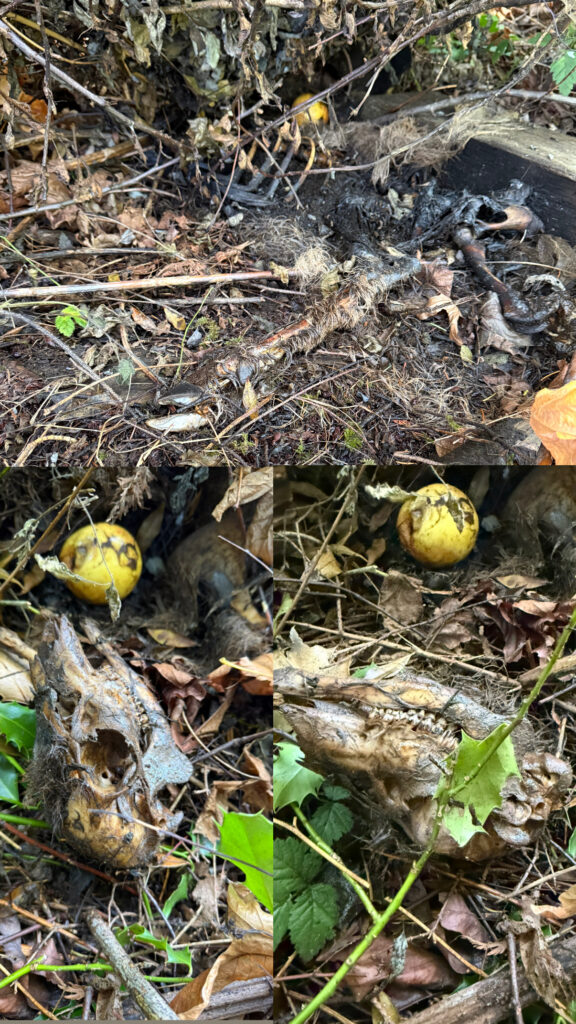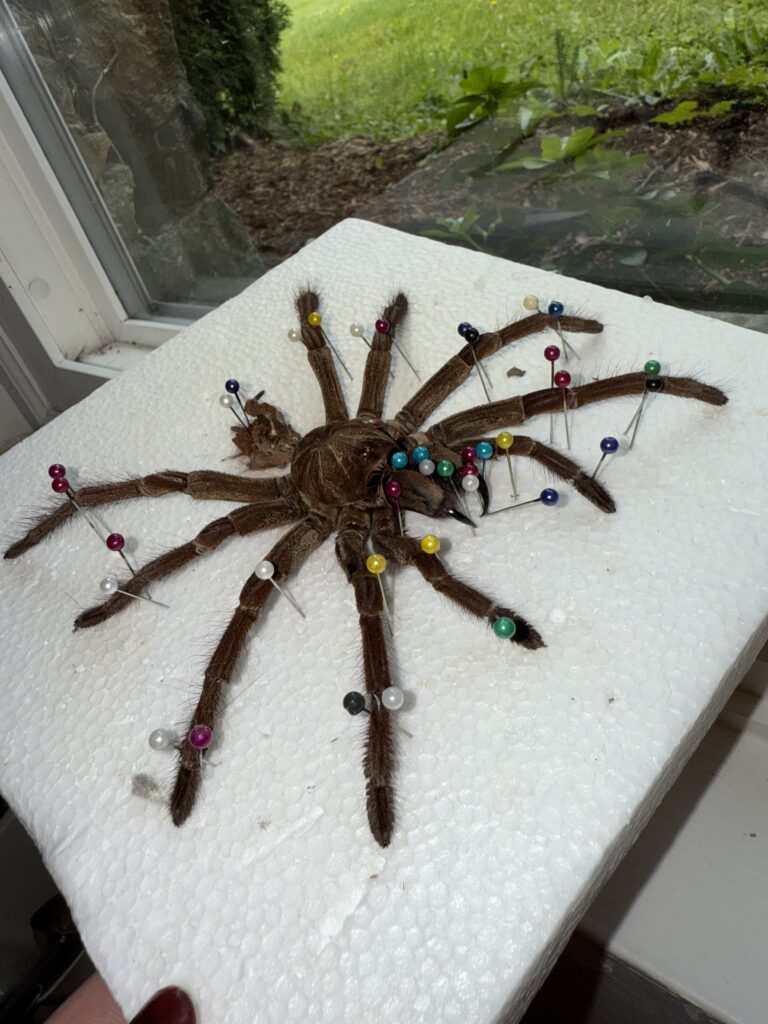
About a month ago, I came across a baby deer that had been hit by a car on the side of the road. I carried it down the ravine into the forest and concealed it with some brush and debris. This week, I returned to check on the deer’s decomposition progress. I didn’t expect to see much change, but I was surprised to find that it was almost completely decomposed. The skeleton was much smaller than I remembered, and the skull was tiny. I plan to leave it for a few more weeks to ensure there are no remaining bits of hair or flesh before I take some pieces of the skeleton home to degreese.
This week, my Burgundy Goliath Birdeater tarantula, Hades (Theraposa stirmi), molted! This is especially exciting because he has only one final molt left before reaching his full size. The Burgundy Goliath Birdeater is the largest species of tarantula in the world, with a leg span of up to a foot—about the size of a subway sandwich. While Hades isn’t that big yet, he’s getting closer. Also, I’m thrilled because I can preserve his molt and turn it into a piece of art.


Not only is Hades the largest tarantula species in the world, but he also possesses some of the most Irritating urticating hairs of any tarantula. In fact, these hairs can potentially cause blindness if they get in your eyes. The hairs were a significant issue for me while pinning Hades’s molt. In the past, when I had to rehouse him, I wore a mask, full-length gloves, and safety goggles. However, this time, I was a bit lazy, thinking that since a molt can’t actively kick hairs, I’d be fine with just gloves. I ended up coughing and feeling itchy for the rest of the day. In a day or two, I’ll be able to remove the pins and frame his molt with some flowers and a crystal to replace the abdomen—definitely wearing more than just gloves next time!
When a tarantula molts, it sheds its old exoskeleton to allow for growth. This process is essential for their development as their exoskeleton does not expand like human skin. During molting, the tarantula becomes vulnerable, often lying on its back or side while it slowly emerges from the old shell. Molting not only allows for size increase but also helps regenerate lost limbs or repair damage. It, requiring a safe, stress-free environment for the tarantula and takes about a week for their new exoskeleton to harden.
I wasn’t able to get a video of Hades molting, but a few months ago, I did capture a timelapse of my juvenile Salmon Pink Birdeater tarantula, Petrie, during his molt. Although the process typically takes several hours, the timelapse shows the amazing transformation in a shorter time. It’s truly an amazing sight to witness.